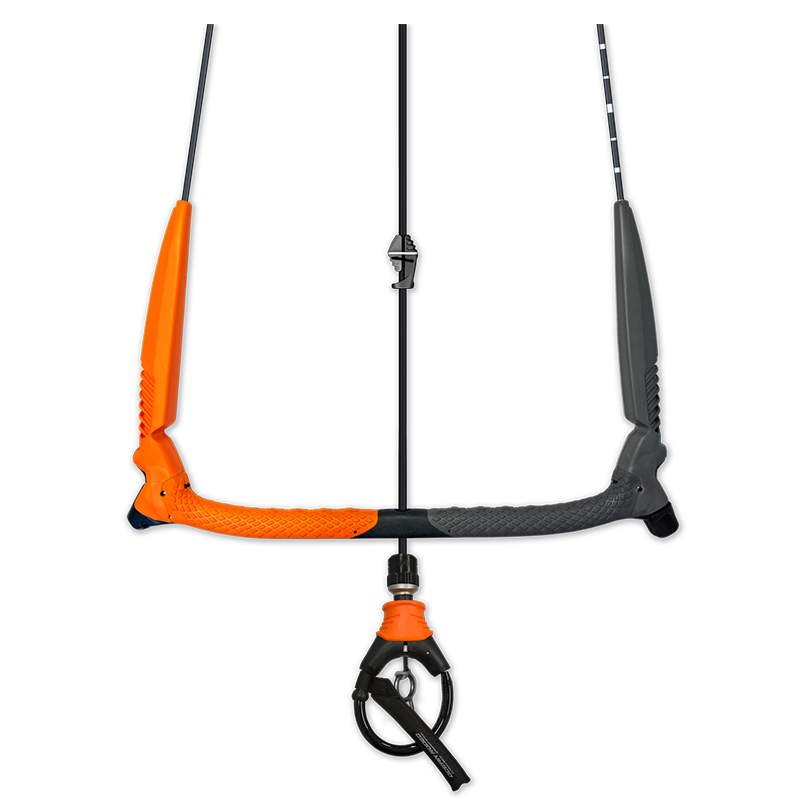When you purchase gear through links on our site, we may earn a small commission. Here’s why you can trust our tests and our affiliate partner.

There have been a few exciting new products hitting the market for 2017 – a lot of ‘thinking outside the box’ products – and we first caught sight of the Stick Shift at the Surf Expo last year. The idea of trimming the rear rather than the front lines has been around for a while, and Ocean Rodeo have been working hard on perfecting (and patenting) their system for a few years. Suffice to say that they are pretty stoked on it and we were excited to get our hands on one to test.
The injection molded carbon composite bar is light and has an ‘open channel’ which the rear lines run along – this enables any grit to flush out easily. It ships with top-end Liros DC401 lines and the production bar will also ship with multiple pigtail options. Although the Stick Shift will fly all of OR’s kites, their aim is clearly to reach beyond this market and to attract riders of other brands over to the Stick Shift. The main differentiating innovation on the bar is the Sidewinder with which you both power and depower the kite; a quarter turn gives you 5mm trim, then to depower you either turn or ‘nudge’ the Sidewinder and it will pay out in the same increments. Also, the spring-loaded back lines (known as the Helix Force Tensioner) ensures clean paying lines even without tension on the back lines, and with the PU tube extending all the way to the two front lines, unspinning your lines with the swivel is super easy.
On the water and the bar feels nice in your hands, it is slightly thicker than some bars, but we found this to be solid and comfortable to hold. The first thing you appreciate with the Stick Shift is how clean the setup is – you don’t quite appreciate how distracting a flapping depower rope is until it’s not there, and it feels quite liberating to have a clutter-free view over the bar. On top of this, the lack of cleat lets you set the G-Stop stopper anywhere you like for maximum throw. When it comes to using the Sidewinder, you need to grip the knob well and then give it a solid turn and you get an instant injection of power. We found that it helped to ease the bar slightly as you turn it. The amount of power you get is about right for a subtler adjustment and we found ourselves generally doing a half turn to make a more significant difference. For depower (and we tested the bar on a few very squally days so really appreciated this!) you can just nudge the Sidewinder and the lines go out quickly and smoothly. If you need instant depower then you can nudge it repeatedly and the lines will keep going. It took us a few tries to really get it mastered, but once we had we found it to be a very effective way to turn the power off. Another bonus is that you can depower with both hands safely on the bar – for less experienced riders this could be a real plus, especially on days such as the ones we were testing in. We also had a few sessions with gloves on and found that we could operate the system easily – more easily than with a cleat as you can really hang on to the Sidewinder.
In a sentence: A well thought out and well-engineered bar – the Sidewinder is simple and intuitive to use and once you’ve got it dialed it is hard going back to a ‘normal’ trim system…